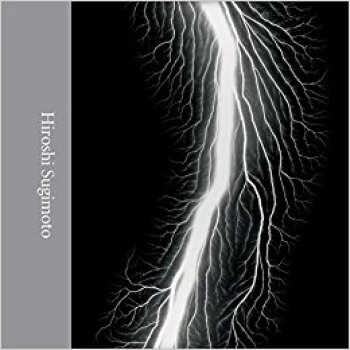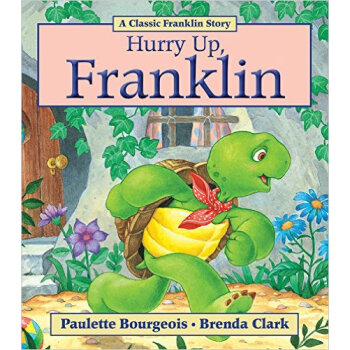![Zoom [精装] [3岁及以上]](https://pic.windowsfront.com/19142173/eb7d0057-fde6-4e25-9418-ea31e53ea1a0.jpg)

具体描述
内容简介
A la manera de Las mil y una noches, en donde un cuento se inserta en otro cuento, Istvan Banyai convierte la imagen en un relato en el que todo puede suceder y prolongar a límites infinitos el placer de mirar y descubrir. Cada vuelta de página implica una sorpresa, cada página es una historia que no se acaba. A wordless picture book presents a series of scenes, each one from farther away, showing, for example, a girl playing with toys which is actually a picture on a magazine cover, which is part of a sign on a bus, and so on.作者简介
Istvan Banyai is a commercial illustrator and animator as well as the author/illustrator of Zoom (Viking and Puffin) and REM (Viking). He lives in New York City.精彩书评
Publishers Weekly "Readers are in for a perpetually surprising-and even philosophical-adventure," said PW in a starred review of this wordless picture book that begins with a close-up of a rooster's comb and ends in outer space. Ages 5-up. (July) Publishers Weekly This provocative wordless volume can be ``read'' either from front to back or even from back to front. Either way, it's a startling experience. Its illustrations ``zoom'' out, as though a viewer has rapidly backed away from each. For example, the first painting, of a jagged-edged red shape, turns out to be a detail of a rooster's comb; as the pages turn, the bird diminishes in importance, until the barn where he stands is shown to be a toy on a magazine's cover. That magazine dangles from the hand of a dozing boy, who himself becomes but a smudge on an advertising billboard. These shifts in perspective repeat until the book abandons earth altogether. The last image is a tiny white sphere-our planet-against a night sky. The bold color and level of detail in Banyai's cartoons recall ``Prince Valiant'' or another of the ``realistic'' Sunday comics. If the concept is not wholly new, the execution is superior. Readers are in for a perpetually surprising-and even philosophical-adventure. All ages. (Mar.) Fewer Reviews School Library Journal PreS-Gr 3-This wordless picture book re-creates the effect of a camera lens zooming out. For example, one illustration shows a boy on a cruise ship, the next shows him from a distance, and the next reveals the whole ship. Finally, the viewpoint moves back farther and it turns out that the ship is actually a poster on a bus. The perspective continues to recede, revealing the bus as an image on a television screen. Three pages later, viewers see that the person watching TV is drawn on a postage stamp. The final picture shows a view of Earth from space. To heighten the effect, all of the full-color illustrations appear on the recto, while each verso is completely black. It's fun to watch the transition in perceptions as a farm becomes a toy, the girl playing with it is on a magazine cover, etc. The novelty soon wears off, however, and nothing else about the book is memorable. The paintings themselves are not particularly interesting and would not stand alone well. David Wiesner's Free Fall (Lothrop, 1988), David Macaulay's Black and White (Houghton, 1990), and Ann Jonas's Reflections (Greenwillow, 1987) use visual tricks, but also have richer artwork and more involving action.-Steven Engelfried, West Linn Library, OR Carolyn Phelan Beginning with a close-up of a rooster's comb, each picture zooms out to give a more distant perspective; for example, the "camera" zooms out to show increasingly distant figures of children watching the rooster. Then, a large hand appears, showing that the scene was not depicting a "real" farm, but a toy farm set. But zoom out a few more times, and the scene reveals that the picture of the girl playing with the farm set is "really" on the magazine held by a boy, who's sleeping in a chair, which is by a pool, which is on an ocean liner, which is out at sea--no, wait--that" picture is on a cruise-line poster on the side of a city bus, but "that" picture is on a television screen in the Arizona desert . . . and so on until the earth is shown from above, growing smaller with each turn of the page. The final scene is one white dot on a black page. Clear-cut paintings outlined in ink appear on each right-hand page; the left-hand pages are black. Not a story, but an "idea" book, it makes the viewer ask, "What am I really seeing here?" This clever picture book could be intriguing or irritating, depending on the viewer's frame of mind, but children will find it worth a look. Once, anyway.前言/序言
用户评价
这本书简直是为我那精力旺盛的小家伙量身定做的!我得说,刚拿到手的时候,我还有点怀疑,毕竟市面上那么多图画书,能真正抓住三岁以上孩子注意力的真不多。但从打开第一页开始,我就知道我这次赌对了。里面的插画色彩饱和度极高,那种鲜艳而不刺眼的感觉,让人看了就心情舒畅。而且,画风非常细腻,那些小细节,比如角色脸上微妙的表情变化,或者背景里藏着的各种小物件,都设计得极其巧妙,每次翻阅都能发现新的惊喜。我儿子最喜欢的是那种充满动感的画面,这本书在这方面做得太出色了,即使是静止的图画,也能让人感受到角色的速度和力量,简直就像在看一场微缩的动画片。我们家那个平时坐不住的娃,居然能安安静静地盯着图画看上好一阵子,时不时还会指着图上的某个地方,叽里咕噜地给我描述他看到的“故事”,虽然他说的那些可能和书本身的故事线毫无关系,但这种主动的探索和想象力的激发,才是做父母的我们最想看到的。这本书的纸张质量也是一流的,厚实又耐撕,对于我们这种“破坏力”惊人的小读者来说,简直是必备良品,完全不用担心他三两下就给弄坏了。
评分自从这本书进入我们家,家庭阅读时间的气氛完全变了。以前是我们“读”给孩子听,现在更像是我们“一起探索”这个神奇的纸上世界。我发现这本书最厉害的一点是,它并不强行灌输一个固定的主题,而是像一个开放式的平台。不同的日子,不同的心境,孩子都能从里面读出不同的东西。比如,有一次他刚从幼儿园受了委屈回来,我给他读这本书时,他特别关注书中一个看似沮丧的角色,并对我说“他看起来需要一个抱抱”,这让我瞬间明白,这本书已经成功地在他内心建立起了一种“共情”的桥梁。它不是在教他“什么是悲伤”,而是在提供一个安全的、具象化的场景,让他可以将自己的真实情感投射进去。这种不直接干预,而是引导思考的方式,是我最欣赏的。它不是那种读完就丢在一边的书,而是会随着孩子年龄和心智的成长,不断焕发出新的生命力,每一次翻阅都是一次新的发现和理解的深化。
评分我是一位资深的绘本收藏家,家里藏书汗牛充栋,但这本书在我最近的“年度最爱”榜单上绝对名列前茅。它的设计哲学非常现代,摒弃了那种过度拟人化或者说教式的叙事,反而更注重营造一种氛围和一种情绪体验。我个人尤其欣赏它的排版艺术,每一页的文字量都控制得恰到好处,那种字体选择和字号大小的搭配,都透露出设计者对阅读体验的极致追求。很多同类书籍会为了凑字数或者情节饱满而牺牲视觉上的呼吸感,但这本完全没有这个问题。它给视觉元素足够的空间去“说话”。我们夫妻俩有时晚上也会一起翻看,发现很多成人能理解的幽默点和巧妙的隐喻,这让我觉得它具有非常高的二次阅读价值——孩子看热闹,大人看门道。而且,这本书的装帧工艺,真的值得称赞。精装版的硬壳手感沉甸甸的,内页的覆膜工艺处理得非常光滑,即使用湿润的小手触摸也不会轻易留下痕迹,这种对细节的坚持,让它在众多纸质书里脱颖而出,显得非常“值当”。
评分说实话,我本来对这种看起来“很基础”的图画书不抱太大希望,觉得无非就是教点颜色、形状之类的老一套。结果,这本书完全颠覆了我的认知。它不仅仅是视觉上的享受,更像是一次精心设计的认知升级体验。比如,它处理一些比较抽象的概念的方式,简直绝妙——不是直接告诉你“这是大”,而是通过对比,用非常巧妙的构图方式让你自己去体会“大”和“小”的尺度感。我记得有一次,我随口问了我家老二一个关于空间位置的问题,他竟然能指着书里的某一页,用他自己的话解释清楚了“在……上面”和“在……下面”的区别,这让我非常吃惊。这本书的节奏把握得非常到位,不像有些书,内容堆砌得太满,孩子看一遍就觉得信息过载了。它懂得留白,懂得让孩子有时间去消化、去感受,甚至去“无聊”一下,因为“无聊”往往是创造力的温床。我们家那位“小大人”现在看书的姿势都有点不一样了,不再是囫囵吞枣地翻过去,而是会停下来,用手指沿着图画的线条描摹,仿佛在和作者进行无声的对话。这本书对培养孩子的观察力和逻辑思维,绝对是潜移默化的好帮手。
评分坦白说,我买这本书纯粹是冲着口碑去的,因为我朋友家孩子强烈推荐,说他们家那个“三年级小神兽”现在看书都得挑这本,我就好奇了。拿到手后,我立刻理解了那种“粘性”。这本书的叙事逻辑非常清晰,虽然对于一个三岁的孩子来说,有些复杂的情节可能需要家长引导,但主线始终是流畅且引人入胜的。它成功地做到了“简单”与“深刻”的平衡。它没有用那些浮夸的特效或者声光电来吸引注意力,而是完全依靠文字的力量和视觉的配合来推进故事。我观察到,我家孩子在听我读到某个关键转折点时,会不自觉地屏住呼吸,那种全神贯注的状态,是我在其他任何活动中都很少见到的。而且,这本书的内容选择非常积极向上,充满了对未知世界的好奇心和探索欲,这对于培养孩子健康乐观的价值观至关重要。总而言之,这本书无疑是一件艺术品,更是一份对孩子未来阅读兴趣的绝佳投资,它让“阅读”本身变成了一种愉悦的期待,而不是一项必须完成的任务。
相关图书
本站所有内容均为互联网搜索引擎提供的公开搜索信息,本站不存储任何数据与内容,任何内容与数据均与本站无关,如有需要请联系相关搜索引擎包括但不限于百度,google,bing,sogou 等
© 2025 book.coffeedeals.club All Rights Reserved. 静流书站 版权所有

![Investing in REITs: Real Estate Investment Trusts, 4th Edition 在房地产投资信托公司投资 [精装] pdf epub mobi 电子书 下载](https://pic.windowsfront.com/19197793/f0865f7b-4161-4683-a64b-0fcfa90c09bb.jpg)
![Good Food: 101 Meals For Two: Triple-tested Recipes: Tried-and-tested Recipes [平装] pdf epub mobi 电子书 下载](https://pic.windowsfront.com/19238156/57b55da8Na1b009d4.jpg)
![Trade Like a Stock Market Wizard: How to Achieve Super Performance in Stocks in Any Market股票魔法师 [精装] pdf epub mobi 电子书 下载](https://pic.windowsfront.com/19280030/rBEQWVFnoZYIAAAAAAFgmDNucW4AAD91QLWVEAAAWCw450.jpg)
![Enjoy Your Symptom!: Jacques Lacan in Hollywood and Out (Routledge Classics)[享受你的征兆] [平装] pdf epub mobi 电子书 下载](https://pic.windowsfront.com/19281932/rBEQYFGi__EIAAAAAAAz6kMdhnQAACFqgDrVUoAADQC151.jpg)
![Flashpoint: The World of Flashpoint Featuring Batman [平装] pdf epub mobi 电子书 下载](https://pic.windowsfront.com/19352736/rBEhVVJbnEEIAAAAAAB0xEqEffEAAEKBgD0kWUAAHTc112.jpg)
![Grace and Grit: Spirituality and Healing in the Life and Death of Treya Killam Wilber [平装] pdf epub mobi 电子书 下载](https://pic.windowsfront.com/19368557/rBEhVlJYMUoIAAAAAABDzwzK9eAAAEFEgIpoHkAAEPn657.jpg)
![Daily Reading Comprehension, Grade 8 [平装] pdf epub mobi 电子书 下载](https://pic.windowsfront.com/19379233/rBEhVVJVIwYIAAAAAAB1E5oVkeYAAD-0AEzUWwAAHUr218.jpg)
![Hello, My Name Is Ruby [精装] [3-6岁] pdf epub mobi 电子书 下载](https://pic.windowsfront.com/19456889/rBEhWlKdsiwIAAAAAAIED-6LJewAAGR6APuP4QAAgQn027.jpg)
![How to Deliver a TED Talk: Secrets of the World's Most Inspiring PresentationsTED演讲的秘密:18分钟改变世界 [平装] pdf epub mobi 电子书 下载](https://pic.windowsfront.com/19462739/rBEhU1K5PV4IAAAAAAHxT9Hs5dkAAHMTgAySEsAAfFn276.jpg)
![Learning R 英文原版 [平装] pdf epub mobi 电子书 下载](https://pic.windowsfront.com/19476527/rBEhWFNfBgUIAAAAAADkBWhIiNEAAMnZgN_Y0IAAOQd319.jpg)
![10% Happier How I Tamed the Voice in My Head, R [平装] pdf epub mobi 电子书 下载](https://pic.windowsfront.com/19531190/5553f688N3b8dc95a.jpg)

![Lonely Planet Boston 孤独星球:波士顿 [平装] pdf epub mobi 电子书 下载](https://pic.windowsfront.com/19546265/56025ed2N567a5e91.jpg)
![BKS Iyengar Yoga The Path to Holistic Health [精装] pdf epub mobi 电子书 下载](https://pic.windowsfront.com/19547455/5609e708Ne782fefa.jpg)
![Olympig! [平装] [05--08] pdf epub mobi 电子书 下载](https://pic.windowsfront.com/19575972/56eb56deN1923b041.jpg)

![Big Data: Principles and Best Practices of Scala [平装] pdf epub mobi 电子书 下载](https://pic.windowsfront.com/19649442/57833875N9109e59d.jpg)
![How to Solve It A New Aspect of Mathematical Me [平装] pdf epub mobi 电子书 下载](https://pic.windowsfront.com/19649775/5af94fa7N21c47e29.jpg)
![Own It The Power of Women at Work [精装] pdf epub mobi 电子书 下载](https://pic.windowsfront.com/19664684/58f5b1b5N895ce8d6.jpg)
